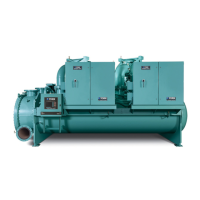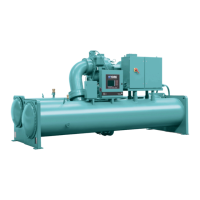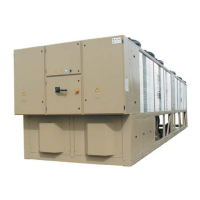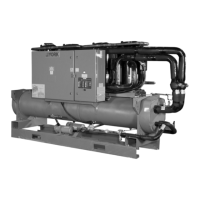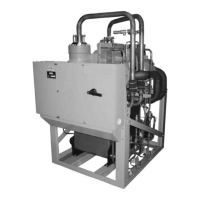Table 102: System pressures
Gauge Absolute
Inches of mercury (Hg) below
one standard atmosphere (in.)
psia
Millimeters of mercury
(Hg)
Microns
Boiling temperatures of
water (°F)
29.882 0.019 1.0 1,000 +1
29.901 0.010 0.5 500 –11
29.917 0.002 0.1 100 –38
29.919 0.001 0.05 50 –50
29.9206 0.0002 0.01 10 –70
29.921 0 0 0
Note:
• One standard atmosphere = 14.696 psia = 760 mm Hg absolute pressure at 32°F = 29.921 in.
Hg absolute at 32°F
• psig = pound per square inch gauge pressure = pressure above atmosphere
• psia = pound per square inch absolute pressure = sum of gauge plus atmospheric pressure
• Shell volume = L*π * r
2
= (Length in feet)*( 3.1416)*(radius squared) = cubic feet
Note: Water freezes at 32°F.
Conducting the dehydration process
Before performing the dehydration process, ensure that the system has been thoroughly leak
checked so that there is confidence in the vacuum decay related to moisture boiling off. The
dehydration process is only needed if the following has occurred:
• The nitrogen holding charge on shipments other than Form 1 has been lost
• The system has been open to the atmosphere for any length of time
• Tube leaks have introduced moisture to the refrigerant circuit
• Indications of moisture contamination have appeared in any of the sight glasses
Dehydration of a refrigerant system can be obtained by the evacuation method because the water
present in the system reacts much as a refrigerant would. It is not always possible to pull down the
vacuum pressure in the system to a point where its saturation temperature is considerably below
that of the equipment room temperature due to low ambient room conditions and other factors.
As a result, you may need to use an external heat source or warm water flow through at least one
vessel to raise the vessel internal temperature. This allows heat to flow into the system and help
vaporize the water, allowing a large percentage of it to be removed by the vacuum pump.
The length of time necessary for the dehydration of a system depends on the following factors:
• Size or volume of the system
• Temperature of the vessels
• Capacity and efficiency of the vacuum pump
• Room temperature
• Quantity of water present in the system
You can use an external heat source to shorten the dehydration time. If you use a vacuum gauge
as suggested, the corresponding saturation temperature can be used as a reference. If the system
has been pressure tested and found to be tight before evacuation, then the saturation temperature
recordings should follow a curve similar to the typical saturation curve in Figure 75.
The temperature of any trapped water in the chiller drops as the pressure decreases, until the
boiling point is reached. At this point, the temperature levels off and remains at this level until
all of the water in the shell is vaporized. When this final vaporization has occurred, the pressure
and temperature continue to drop until eventually a temperature of 35°F (1.6°C) or a pressure of
151
YMC
2
Mod B with OptiView Control Center

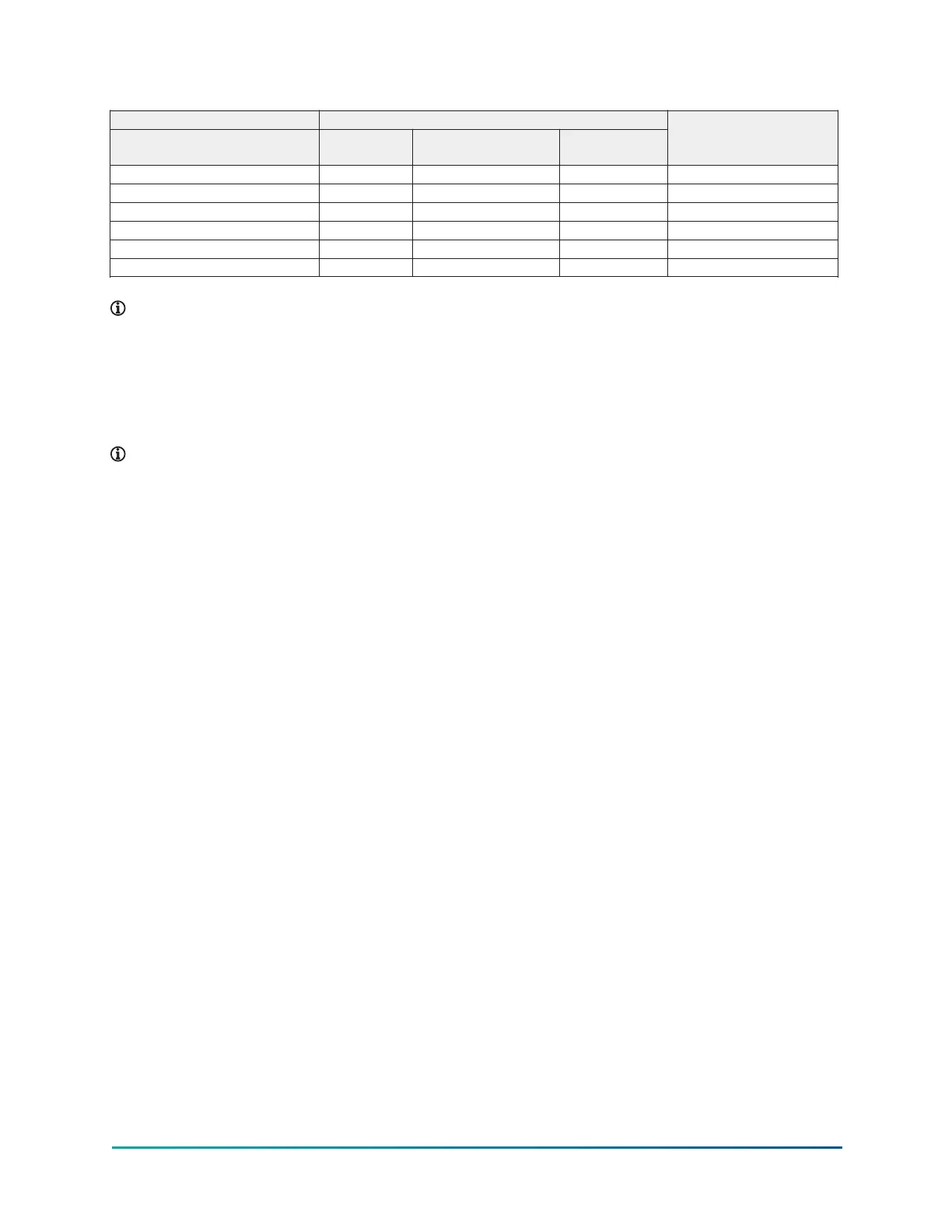